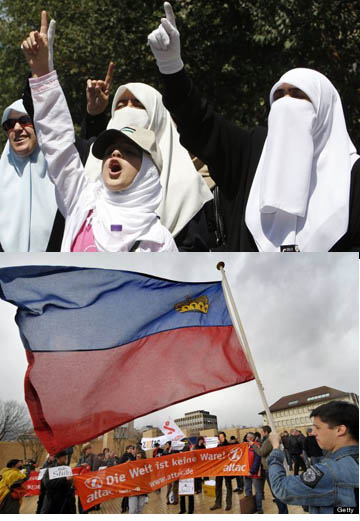
Women in Jordan (top); women in Lichtenstein (bottom): Which country first allowed women to vote?
In every region, there are laws that discriminate against women, in relation to property, the family, employment and citizenship. Too often, justice institutions, including the police and the courts, deny women justice.
Progress of the World’s Women, UN Report
Much attention is paid to the disparate gender roles in Islamic countries, from blanket veiling of women to not being allowed to drive cars. Yes, there are cultural elements in a number of Muslim-majority countries that treat women unequally. But gender inequality is not specific to Islam or any single nation. The sad truth is that in 2011 the species of Homo sapiens has not yet evolved a universal sense of the equal worth of males and females. Theories abound as to why males tend to dominate and it would be premature to believe that males have always been on top in social interaction. I do not defend cultural practices, dressed in religious rhetoric, that discriminate against women (nor would I if they discriminated against men, which is so rare it seems absurd to mention it). But it is useful to remind ourselves in the secular West of the Gospel advice that we should not be so intent on dissing the mote in someone else’s eye when there is a beam in our own (I see no problem in reversing the mote and beam for the moral).
Take voting, for example. Exactly a century ago only two countries in the world allowed women to vote. Today, that right is almost universal. It is not yet a century since women received the right to vote in the United States. In a recent UN report on the state of women worldwide, the record on voting rights is indeed mixed. Thus, women in Jordan could vote in 1974, but in Europe’s Lichtenstein they did not have the opportunity until 1984 (an ominous date, to be sure).